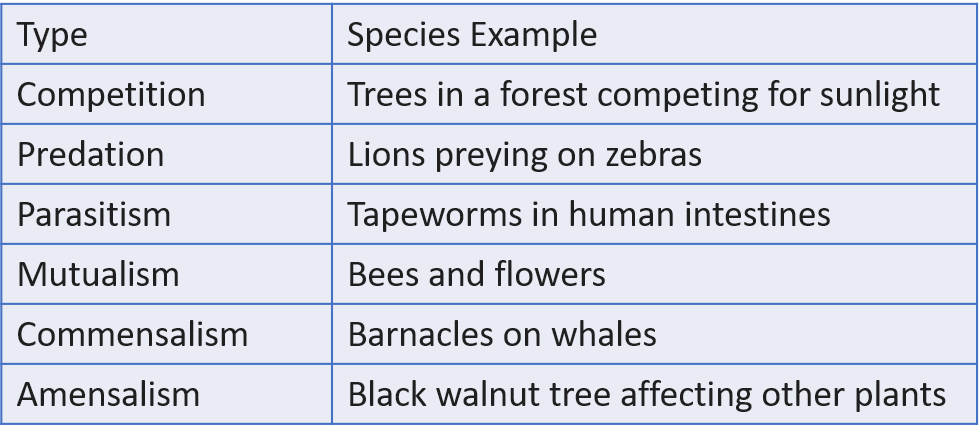Biotic Interactions: Competition, Predation, Parasitism, Mutualism, Commensalism, Amensalism
Biotic Interactions
Biotic interaction refers to the various ways in which living organisms within an ecosystem interact with each other. These interactions are crucial for the survival and functioning of ecosystems, influencing population dynamics, community structure, and the flow of energy and nutrients. Biotic interactions can be classified into several types, each with its own set of dynamics and consequences for the organisms involved. Here are the main types of biotic interactions, along with examples:
1. Competition
Competition occurs when two or more organisms vie for the same resource that is in limited supply, such as food, water, territory, or mates. This interaction can be intra-specific (between individuals of the same species) or inter-specific (between individuals of different species).
Example: In many forest ecosystems, trees of different species compete for sunlight, with taller trees often outcompeting shorter ones by absorbing more light.
2. Predation
Predation involves one organism (the predator) killing and eating another organism (the prey). This interaction is crucial for the predator’s survival and has significant implications for the prey population.
Example: Lions preying on zebras in the African savanna is a classic example of predation.
3. Parasitism
In parasitism, one organism (the parasite) lives on or in another organism (the host), from which it derives nutrients at the host’s expense. Parasites may or may not cause disease in the host.
Example: Tapeworms living in the intestines of various mammals, including humans, where they absorb nutrients from the host’s food.
4. Mutualism
Mutualism is a cooperative interaction where both organisms involved benefit from the relationship.
Example: The relationship between bees and flowers is mutualistic. Bees get nectar and pollen for food from flowers, while flowers get pollinated by bees as they move from one flower to another.
5. Commensalism
In commensalism, one organism benefits from the relationship while the other is neither helped nor harmed.
Example: Barnacles attaching to whales. The barnacles benefit by being transported to different feeding grounds, while the whale is largely unaffected by their presence.
6. Amensalism
Amensalism occurs when one organism is inhibited or destroyed while the other remains unaffected. This interaction is often a byproduct of an organism’s activity rather than a direct attack.
Example: The black walnut tree (Juglans nigra) produces a chemical called juglone, which inhibits the growth of many other plants beneath its canopy.

Each of these interactions plays a vital role in shaping the ecological communities by affecting the distribution, abundance, and evolution of the species involved. Understanding these interactions is crucial for conservation efforts and managing natural resources sustainably.
